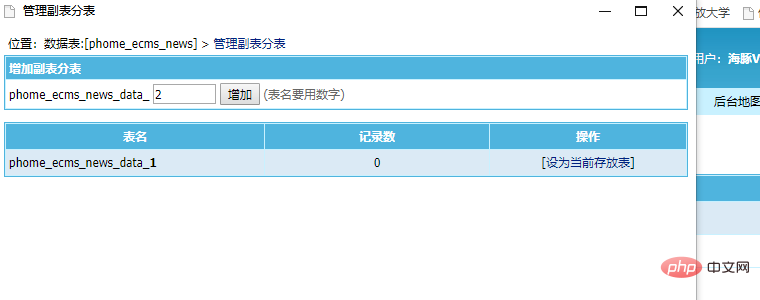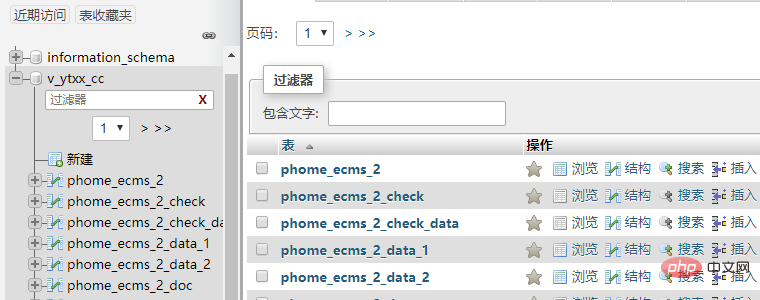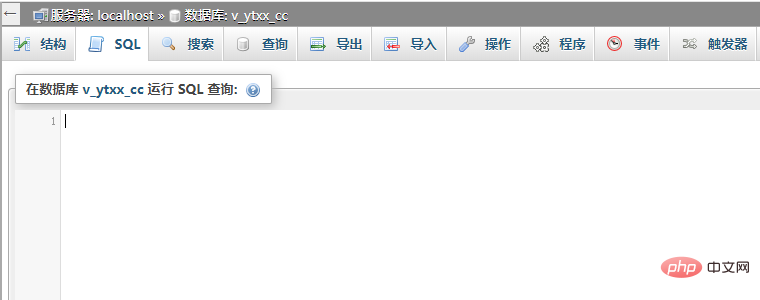How to divide the empire cms schedule into tables

In the use of Imperial CMs, as time goes by, the website will become larger and larger, and at this time, sub-tables will inevitably appear.
Establishment of Empire CMS sub-table

First enter the background of Empire, click System-Data Table and System Model-Manage Data table, and then you can see a familiar screen

Here, find the database you need to modify or migrate, and then click Manage Tables at the back

After opening the sub-table, click Add. Although it is said that you can set the sub-table name yourself, for the convenience of subsequent operations, it is recommended that you just use the default digital sub-table. Don't change it casually.
Then you can come to the sql background to operate. You need to use the sql command line here. If you don’t know much about it, you can also use PhpMyadmin to operate. In order for everyone to understand, dolphins are also here. Use pma to operate.
Empire CMS sub-table data transfer

After entering phpmyadmin, click on the database that needs to be operated, and then do not click on the database on the right. Click SQL directly to enter the command operation line, and capitalize

Here you can enter your favorite command
INSERT INTO phome_ecms_28_data_2 SELECT * FROM phome_ecms_28_data_1 T2 WHERE T2.ID>= 100001 AND T2.ID<= 200000; update phome_ecms_28 set stb=REPLACE(stb,1,2) WHERE ID>= 100001 AND ID<= 200000;
Explanation The meaning of the following code:
First sentence: Insert rows in the second sub-table of the phome_ecms_28 data table
Second sentence: Copy the first sub-table data of the phome_ecms_28 data table to the data table Second sub-table
The third sentence: Limit the ID range of the data information to be copied to 100001 to 200000
The fourth sentence: Change the sub-table ID in the data table phome_ecms_28 for query
Fifth sentence: Limit the ID range of the phome_ecms_28 table to be modified to 100001 to 200000
Recommended: Empire cms website building tutorial
The above is the detailed content of How to divide the empire cms schedule into tables. For more information, please follow other related articles on the PHP Chinese website!

Hot AI Tools

Undresser.AI Undress
AI-powered app for creating realistic nude photos

AI Clothes Remover
Online AI tool for removing clothes from photos.

Undress AI Tool
Undress images for free

Clothoff.io
AI clothes remover

AI Hentai Generator
Generate AI Hentai for free.

Hot Article

Hot Tools

Notepad++7.3.1
Easy-to-use and free code editor

SublimeText3 Chinese version
Chinese version, very easy to use

Zend Studio 13.0.1
Powerful PHP integrated development environment

Dreamweaver CS6
Visual web development tools

SublimeText3 Mac version
God-level code editing software (SublimeText3)

Hot Topics
 Where is the imperial cms website map?
Apr 17, 2024 am 10:48 AM
Where is the imperial cms website map?
Apr 17, 2024 am 10:48 AM
The Empire CMS sitemap can be found by accessing the config.inc.php file and checking the dositemap settings. If set to "on", sitemap is enabled. The sitemap path is located in the sitemapurl setting and can be accessed via a browser or downloaded via FTP.
 Where are the settings for the mobile version of Empire CMS?
Apr 17, 2024 pm 12:12 PM
Where are the settings for the mobile version of Empire CMS?
Apr 17, 2024 pm 12:12 PM
The mobile settings of Empire CMS are located in the "Mobile Template" of the "Template Management" module. The specific steps include: enabling the template, selecting the application channel, editing the template content, and saving the settings.
 Where is the imperial cms resource network template?
Apr 17, 2024 am 10:00 AM
Where is the imperial cms resource network template?
Apr 17, 2024 am 10:00 AM
Empire CMS template download location: Official template download: https://www.phome.net/template/ Third-party template website: https://www.dedecms.com/diy/https://www.0978.com.cn /https://www.jiaocheng.com/Installation method: Download template Unzip template Upload template Select template
 Where can I put the empire cms template file for easy use?
Apr 17, 2024 am 07:22 AM
Where can I put the empire cms template file for easy use?
Apr 17, 2024 am 07:22 AM
The ideal location for the Empire CMS template file is /e/template/default/skin/default/. Secondly, it can also be placed in /e/data/skins/ and /e/skin/. You need to pay attention to maintaining the folder structure and setting file permissions. and regular backups.
 Where to find the empire cms database configuration file
Apr 17, 2024 am 06:42 AM
Where to find the empire cms database configuration file
Apr 17, 2024 am 06:42 AM
The Imperial CMS database configuration file is located in the website root directory e/config/db.inc.php. It contains the following configuration information: $dbhost: database server address $dbuser: database user name $dbpass: database password $dbname: database name $dbport :Database port $dbcharset: Database character set
 Is empire cms free?
Apr 17, 2024 am 11:24 AM
Is empire cms free?
Apr 17, 2024 am 11:24 AM
Yes, Empire CMS is a free and open source content management system (CMS). It is a lightweight CMS that is feature-rich and easy to use. Empire CMS is licensed under the GNU General Public License (GPL), which means it is free to download, install and use. For commercial use, it offers a paid version that offers additional features and support such as ad management, online payments, and premium technical support.
 Where is the automatic publishing interface of Empire CMS?
Apr 17, 2024 am 09:03 AM
Where is the automatic publishing interface of Empire CMS?
Apr 17, 2024 am 09:03 AM
The automatic publishing interface of Empire CMS is located at /e/api/web/postinfo.php. The usage steps are as follows: visit /e/api/web/postinfo.php address and use HTTP POST to submit the article title, column ID, category ID, author and article The content and other data interfaces will return a response in JSON format, which contains the publishing results and article ID.
 Where is the Imperial CMS member center?
Apr 17, 2024 am 04:45 AM
Where is the Imperial CMS member center?
Apr 17, 2024 am 04:45 AM
The Imperial CMS Member Center is located in the "Member Management" menu in the background or at the following URL: Browser side: https://your domain name/e/member/user.php Server side: /e/member/user.php Functions included in the Member Center Including member management, member group management, personal center, points management, level management, etc., to facilitate administrators and members to manage website account information.






